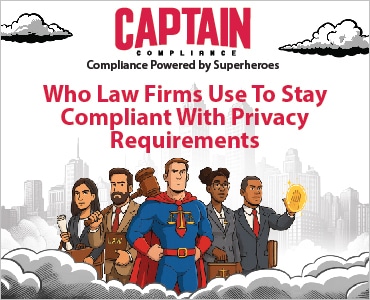“That’s why we have lawyers. They study a language for three years, and they learn it, and it’s a language that if a normal person read it, they’d have a stroke.”
— Lewis Black on reading your own mortgage documents, from his 2010 show “Stark Raving Black”
Let’s face it: Lawyers don’t think, talk or write like regular people. We’re trained not to. The systems we work in are bewildering. The language we speak is full of specialized terms. The documents we create are both written in our language and designed to work within the legal system, making them highly unfriendly to non-lawyers.
Regular people know this, and yet they come to lawyers every day (often unwillingly) for help with some of the most important issues in their lives. Many of them have little idea what to expect from this experience, except that whatever happens will probably be confusing and expensive.
It’s little wonder, then, that clients are anxious when they walk through your office door. You can’t avoid it at the start of your relationship, but you can alleviate confusion and anxiety if you do two things:
- First, regularly step into your client’s shoes to view yourself, the work and the system from the client’s perspective.
- Second, think of yourself as a translator or intermediary for your client within the system.
Here are two opportunities for you to put this idea into practice and bridge the gap between the client’s world and the lawyer’s world.
1. The Road Map
If the work you will be doing has a predictable course, you should explain it to the client in your initial meeting. But don’t stop there — give it to him in a useable written format as well, so he has something to refer to as the matter progresses.
For example, a typical plaintiff’s personal injury case follows a pattern from investigation through mediation or trial, and the process is loaded with legal jargon — “demand letter,” “discovery,” “interrogatories” and so forth. The language and process may be routine for you, but baffling and discouraging to the client. The written road map you create for the client should lay out predictable steps, define terms clearly and give estimated times for completion.
Consider making a road map available on your website as well, for your current clients to use and your prospective clients to discover.
2. The Documents
When you’re sending documents to your client for review, think about what those documents look like from her perspective. Are they accessible, or intimidating? If the latter, think about how you can make them more accessible to the client, then do that.
A funny, insightful, non-lawyer blogger I follow illustrated this clearly. She and her husband overcame their dread of creating an estate plan and met with a lawyer to discuss it. Although the initial meeting went well, the inch-high stack of will and trust drafts that followed proved unnerving. The lawyer sent an explanatory email with the documents, but the mere presence of those documents in the house caused stress — the prospect of reviewing them was overwhelming.
Her husband came up with an elegant solution, she said. He “printed everything out and stapled it by sections, and then cut up the lawyer’s explanatory email and put each piece of email with its appropriate section, so we could easily tackle it in smaller chunks.” This made an “enormous difference,” and they reviewed the first section quickly.
What if the lawyer had come up with this solution instead of leaving it to the clients to figure out? It would have decreased their stress, quickened the document turnaround, and been an altogether better experience.
Consider your own practice: How many times have you sent a stack of impenetrable documents and an explanatory letter to a client, without stopping to think about what they look like to someone who doesn’t do what you do every day? The client needs to review the documents — how can you simplify that step for him?
Attempting to bridge the gap between the client’s world and the lawyer’s world requires a different kind of thinking, but it’s worth it in the long run. It can improve both communication and the client’s experience with you. A client won’t send friends, relatives or business associates to a lawyer if he thinks they’ll have a miserable experience. If he knows they’ll be taken care of, though, he’ll send them, and he’ll come back when he needs you again.
It’s amazing what a change in perspective can bring.
Mary Taylor Lokensgard is a recovering attorney with over 15 years of experience in private practice, including plaintiff’s personal injury litigation, estate planning and administration, and elder law. She’s now working for herself as an independent writer, and she tweets @marylokensgard.
Illustration ©iStockPhoto.com.
















